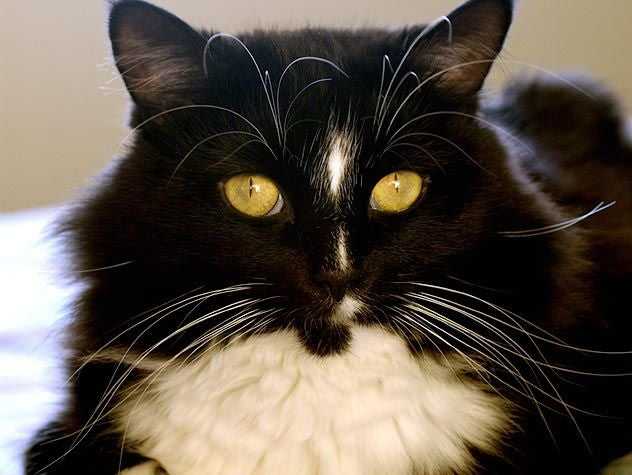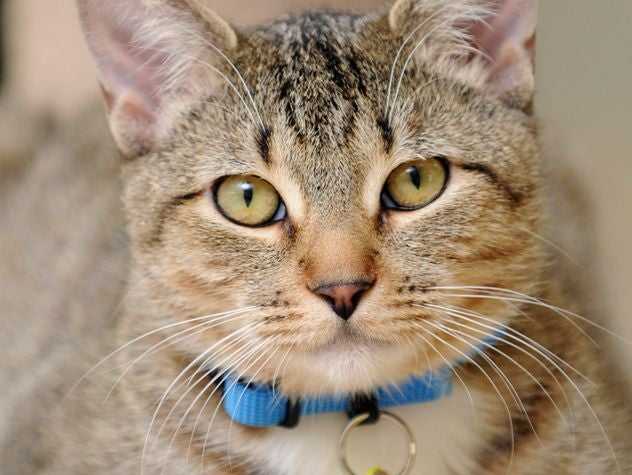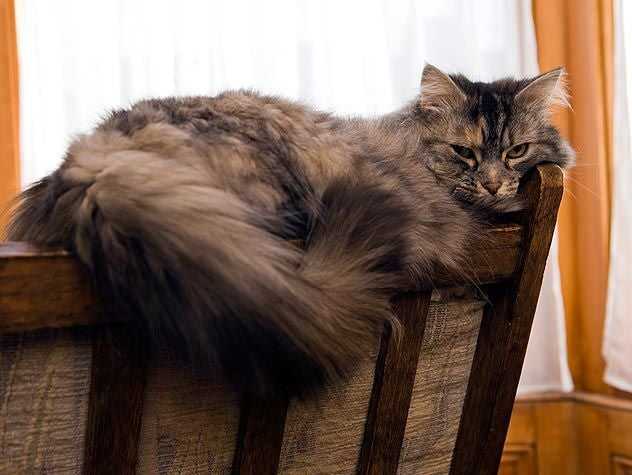Liver Disease in Cats – Causes, Symptoms, & Treatment

If you see yellow in the whites of your cat’s eyes, take action immediately. This yellowing — known as jaundice — could be an indicator of liver disease and must be taken seriously.
What Causes Liver Disease in Cats?
[The liver has a lot of jobs to do in a cat’s body. Some of its work includes metabolizing fats, proteins, and carbohydrates, and storing vitamins and minerals. In all, it has more than a thousand duties. And because of its numerous tasks, the liver is prone to damage from a variety of systems within the body. Here are some of the more common causes of liver disease in cats:
- Fatty liver syndrome, which can be caused by rapid weight loss
- Bacterial or viral infections
- Lymphoma
- Poisoning
- Heart disease
- Birth defects
- Advanced age
Symptoms of Liver Disease in Cats

The indicators of liver disease in cats can be a bit ambiguous because they are similar to symptoms of many other diseases and illnesses. They include lethargy, loss of appetite, dehydration, weight loss, vomiting or diarrhea, and fever. More symptoms of the more severe disease might include seizures, high fever, dark urine, and a distended abdomen.
If you notice that these changes in your cat are accompanied by a yellowing of the eyes (and sometimes the tongue, gums, or skin), then that’s an indicator there may be a problem with his liver. Of course, any of the other symptoms are still enough to warrant a trip to your cat’s veterinarian. Even if all signs point toward liver disease, your veterinarian can’t provide a definitive diagnosis without a blood test.
Treatments for Liver Disease in Cats
Finding the Right Treatments
The liver is a regenerative organ, and in some cases of liver disease, it can heal itself. However, while the organ is not functioning properly, it is important to focus on your cat’s nutrition and any symptoms he may be experiencing.

A veterinarian-prescribed diet and nutrition plan can help compensate for any vitamin deficiencies your cat may suffer due to the liver disease, and treating his symptoms can help prevent your cat’s condition from worsening. Therefore, your veterinarian may administer fluids for dehydration, as well as drugs that help ease vomiting or diarrhea.
In addition, vets often prescribe:
- Antibiotics (to help prevent secondary infections)
- Corticosteroids (to reduce inflammation and scarring of the liver)
- Cytoprotective agents (to prevent ulcers in the stomach or intestines)
- Diuretics (to reduce swelling in the abdomen)
Supplemental Therapies
If your cat has liver disease, it’s also recommended that you give him daily supplements to help combat vitamin deficiencies. Vitamins K, B12, and E are thought to be particularly helpful.
Vitamin K can help control bleeding disorders in your cat — something his body is less capable of doing once he has developed liver disease. Vitamin B12 can help your cat’s liver digest other vitamins, and vitamin E is an antioxidant that helps protect the liver from additional injury. Just be sure that you give your cat a water-soluble form of vitamin E. Fat-soluble vitamins tends not to be absorbed well by a diseased liver.
Veterinarians are now also recommending S-adenosylmethionine (SAMe) and L-carnitine as preferred supplements for cats with liver disease. SAMe is believed to increase liver-cell functioning and regeneration, and L-carnitine protects the liver from the accumulation of lipids and ammonia.
In addition to supplements, you’ll need to feed your cat an easily digestible diet, which will reduce the amount of work his damaged liver has to do. There are special cat foods formulated for cats with liver disease. Ask your veterinarian about prescribing one.
Not all cases of liver disease are curable, but regardless of his prognosis, improving your cat’s nutrition and treating his symptoms can improve his quality of life.
Sources
- Broadway Veterinary. “Liver Disease in Cats.” (June 13, 2011)
http://www.broadwayvh.com/site/view/162473_LiverDiseaseCats.pml
FAB Cats. “Feline Liver Disease.” Nov. 2008 (June 13, 2011)
http://www.fabcats.org/owners/liver/info.html - Hill’s Pet Nutrition. “Liver Disease in Cats.” (June 13, 2011) http://www.hillspet.com/cat-care/cat-disease-liver-disease.html
- Pet Education, Doctors Foster, and Smith. “Treatment of Liver Disease in Cats.” (June 13, 2011) http://www.peteducation.com/article.cfm?c=1+2135&aid=312
- Whiteley, H. Ellen. “How to Treat Common Cat Diseases.” HowStuffWorks.com. (June 13, 2011) http://animals.howstuffworks.com/pets/how-to-treat-common-cat-diseases9.htm